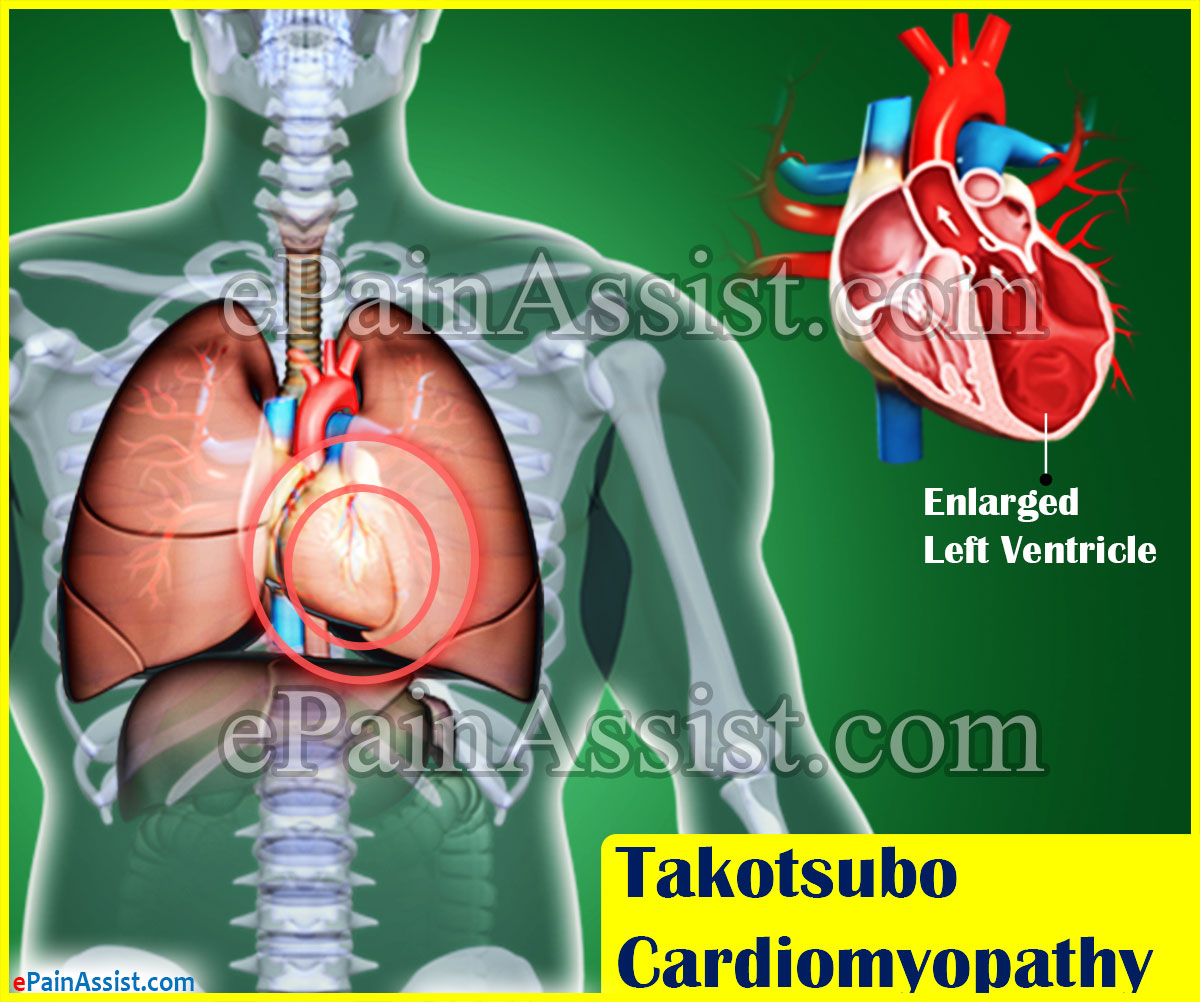What is Takotsubo Cardiomyopathy or Broken Heart Syndrome?
Takotsubo Cardiomyopathy also known by the name of Broken Heart Syndrome is a pathological condition of the heart brought on when an individual is under extreme amount of stress, like a demise of a close relative. This condition is temporary in nature. People suffering from Takotsubo Cardiomyopathy or Broken Heart Syndrome tend to have sudden onset of chest pains and are of the notion that they are having a heart attack. Takotsubo Cardiomyopathy or Broken Heart Syndrome signifies a temporary malfunction in the normal pumping function of the heart while the remainder of the heart functions totally normally. This happens because of a reaction of the heart to a surge of stress hormones. The symptoms caused by Takotsubo Cardiomyopathy or Broken Heart Syndrome are totally treatable and the heart returns back to normal may be within about a week or so.

What is the Cause of Takotsubo Cardiomyopathy or Broken Heart Syndrome?
The root cause of Takotsubo Cardiomyopathy or Broken Heart Syndrome is not clearly known. It is believed to be caused due to damage done to the heart due to stress hormones like adrenaline in some people. How do these hormones exactly affect the heart is still a matter of ongoing study or whether there is something else that causes the heart to malfunction in stress which is still not known. Some researchers state that temporary constriction of the arteries of the heart may have a role in this condition. Some of the events that can trigger Takotsubo Cardiomyopathy or Broken Heart Syndrome are:
- News of an unexpected demise of a close relative or a loved one
- Being suddenly diagnosed by a serious medical condition
- Abuse or being subjected to violence
- Huge financial loss
- Being a victim of a natural disaster
- Losing a job
- Divorce
- Physical stressors like a motor vehicle accident
- Certain medications like Effexor, epinephrine, or Cymbalta may also cause Takotsubo Cardiomyopathy or Broken Heart Syndrome.
What are the Risk Factors for Takotsubo Cardiomyopathy or Broken Heart Syndrome?
It is noted that Takotsubo Cardiomyopathy or Broken Heart Syndrome affects females more than males, especially females above the age of 50 or more.

What are the Symptoms of Takotsubo Cardiomyopathy or Broken Heart Syndrome?
Some of the symptoms of Takotsubo Cardiomyopathy or Broken Heart Syndrome are chest pain and shortness of breath.
How to Diagnose Takotsubo Cardiomyopathy or Broken Heart Syndrome?
In case of a suspicion of a Takotsubo Cardiomyopathy or Broken Heart Syndrome the treating physician will conduct the following:
History and Physical: The physician will first start with taking a detailed history to ascertain of the patient has been subjected to any stressful situations of late apart from whether the patient has any past history of any cardiac conditions. People with Takotsubo Cardiomyopathy or Broken Heart Syndrome do not have any cardiac history and mostly are under extreme amount of stress at the time of evaluation. The physician will also want to know the reason for the undue stress the patient is undergoing to see if the patient may be helped with a psychological counseling to get over the stress, especially in cases of a loss of a loved one, divorce, or a financial loss. Apart from this, the physician will also order certain tests to check the functioning of the heart. These tests are:
Echocardiogram: This test makes use of ultrasound waves to look at the functioning of the heart. This test can accurately identify any abnormality of the functioning of the heart.
Electrocardiogram: This test shows the heartbeat in the form of electrical impulses. This test can show whether there is any abnormality in the rhythm of the heart and whether the heart is functioning normally.
Stress Test: This is a test in which the patient is asked to walk on a treadmill to simulate an environment of stress while the patient is connected to cardiac monitors. The cardiac activity is monitored to see if there is any abnormality present in the functioning of the heart.
What is the Treatment for Takotsubo Cardiomyopathy or Broken Heart Syndrome?
There is no clear cut guideline for treating Takotsubo Cardiomyopathy or Broken Heart Syndrome. The patient may be kept in the hospital and given medications like ACE inhibitors, diuretics, and statins to reduce the load off of the heart till it gets back to functioning normally and then these medications are stopped. The patient is usually kept in the hospital for a few days till the time they recover. It usually takes a couple of months to completely recover from Takotsubo Cardiomyopathy or Broken Heart Syndrome. Psychological counseling may also be done in order for the patient to overcome the stress that the patient may be under so that the patient is able to overcome the stressful situation with minimal damage done to the patient’s overall health.
How to Prevent Takotsubo Cardiomyopathy or Broken Heart Syndrome?
It is rare but at times Takotsubo Cardiomyopathy or Broken Heart Syndrome can recur. There is no sure shot way to prevent this condition but in some cases the physician may recommend long term use of medications after the first attack so as to prevent any further attacks but the best way to stay away from attacks of Takotsubo Cardiomyopathy or Broken Heart Syndrome is to identify and manage stress appropriately and take it in the stride so that future attacks do not happen of Takotsubo Cardiomyopathy or Broken Heart Syndrome.
